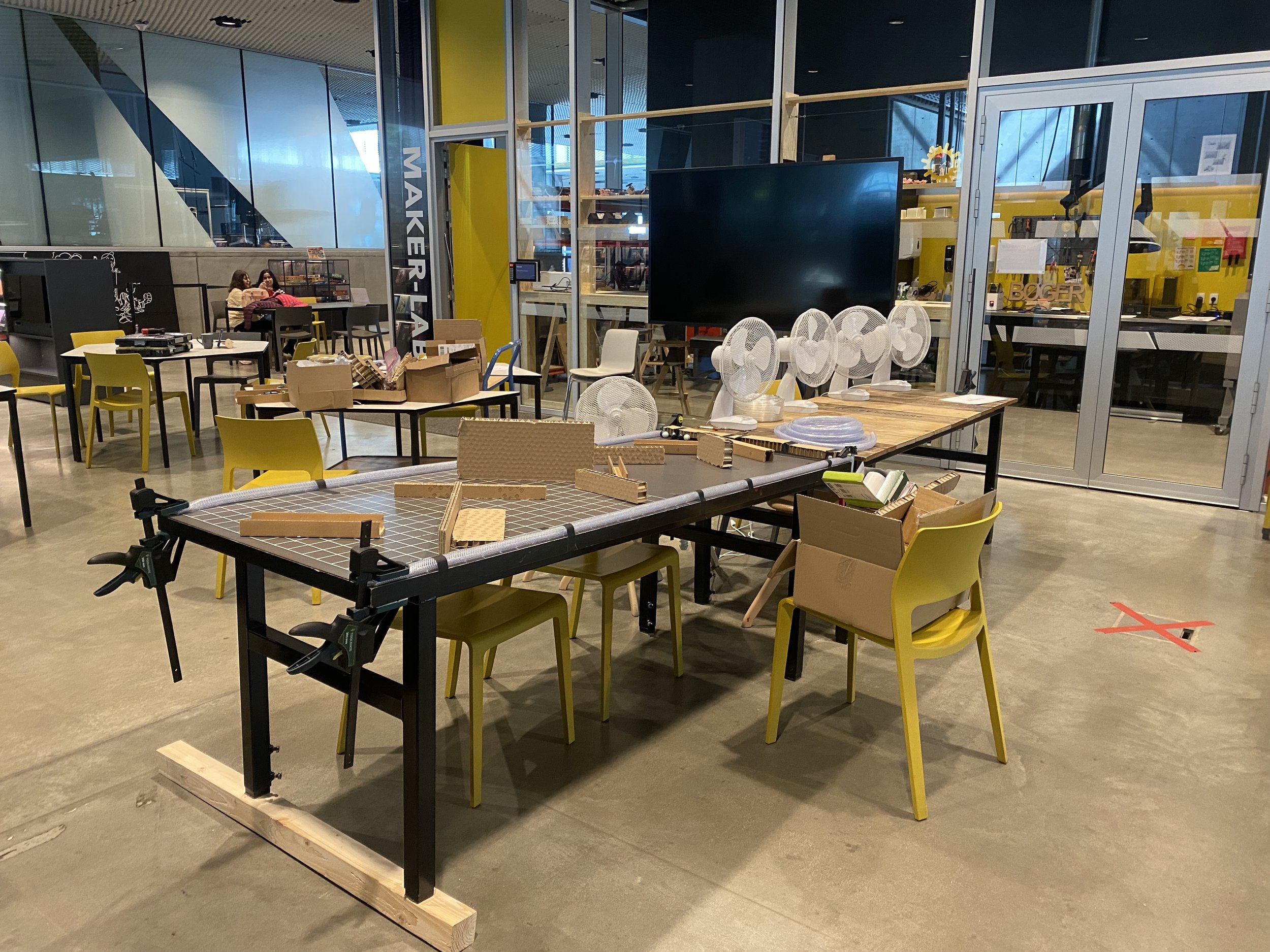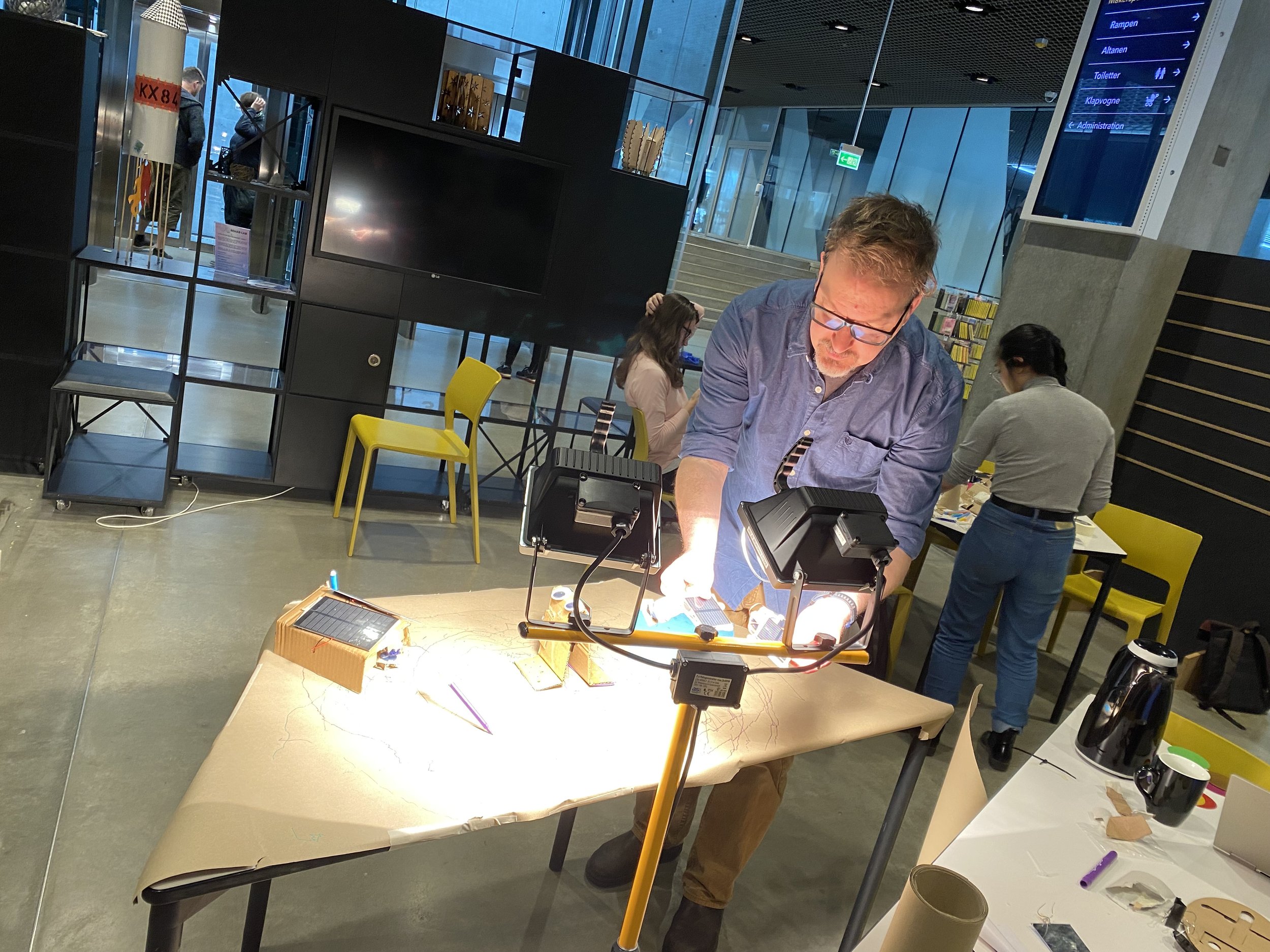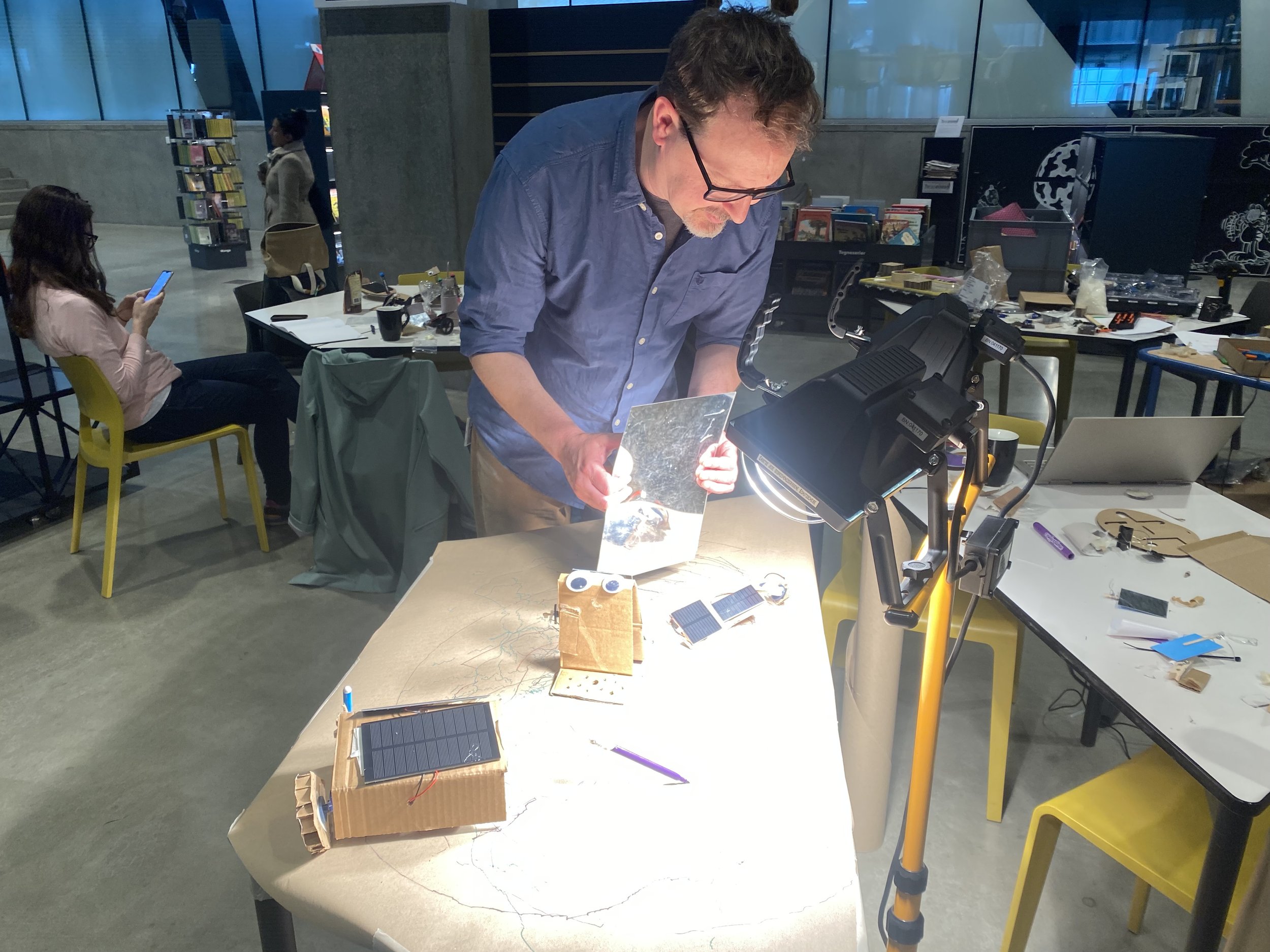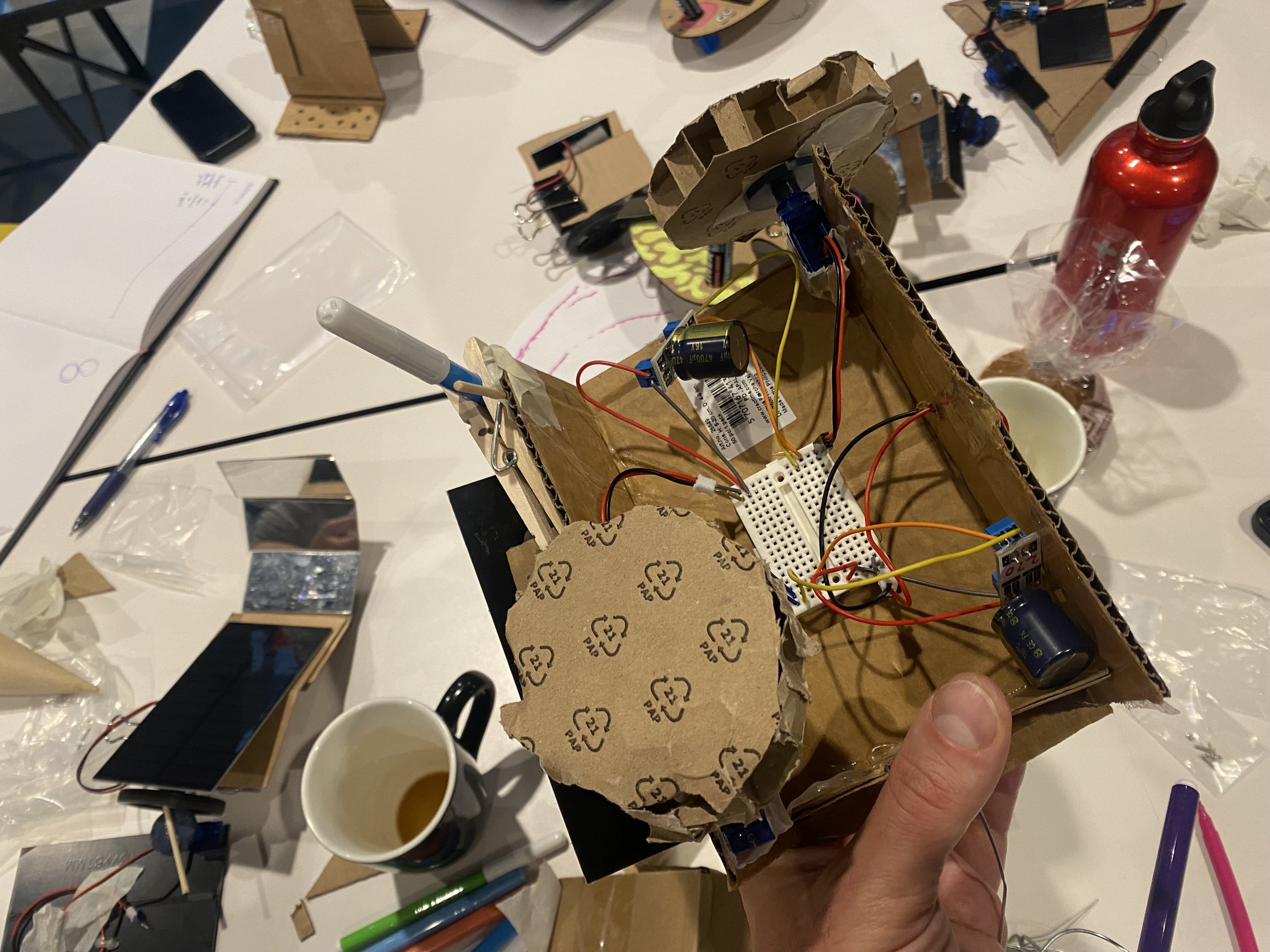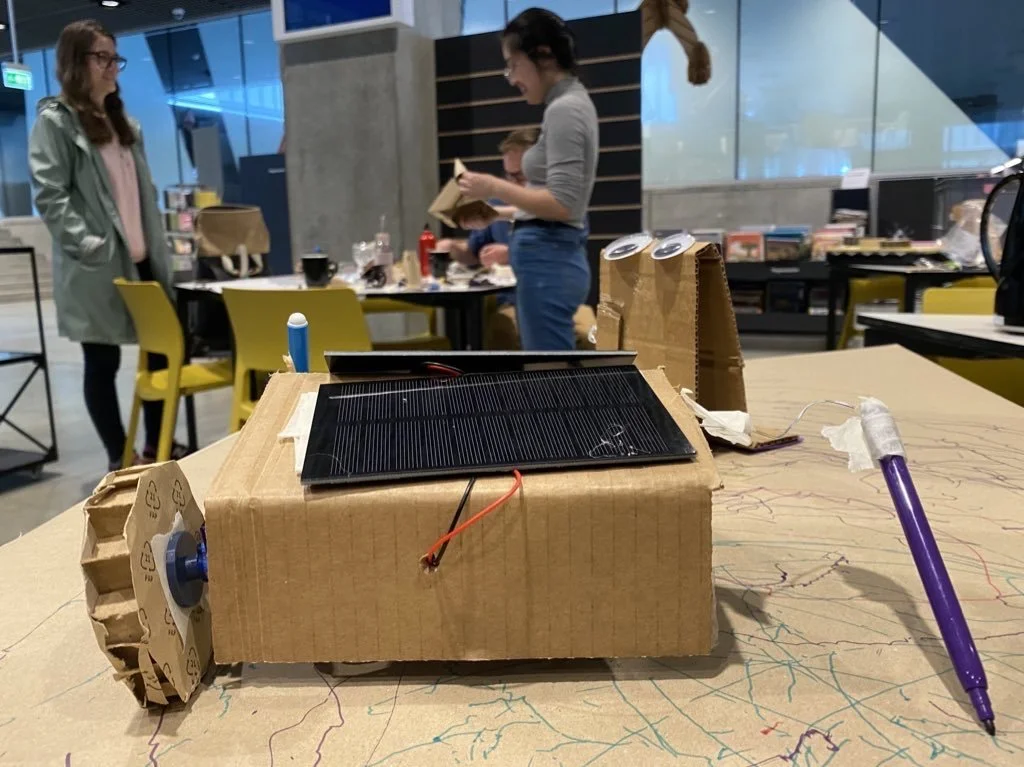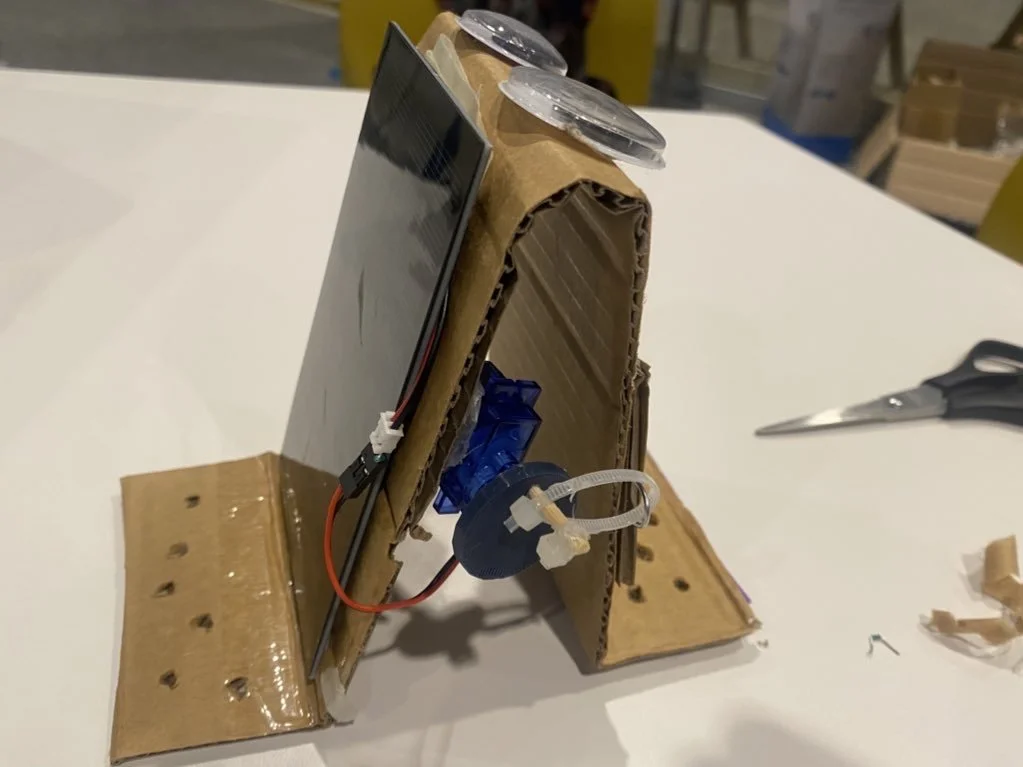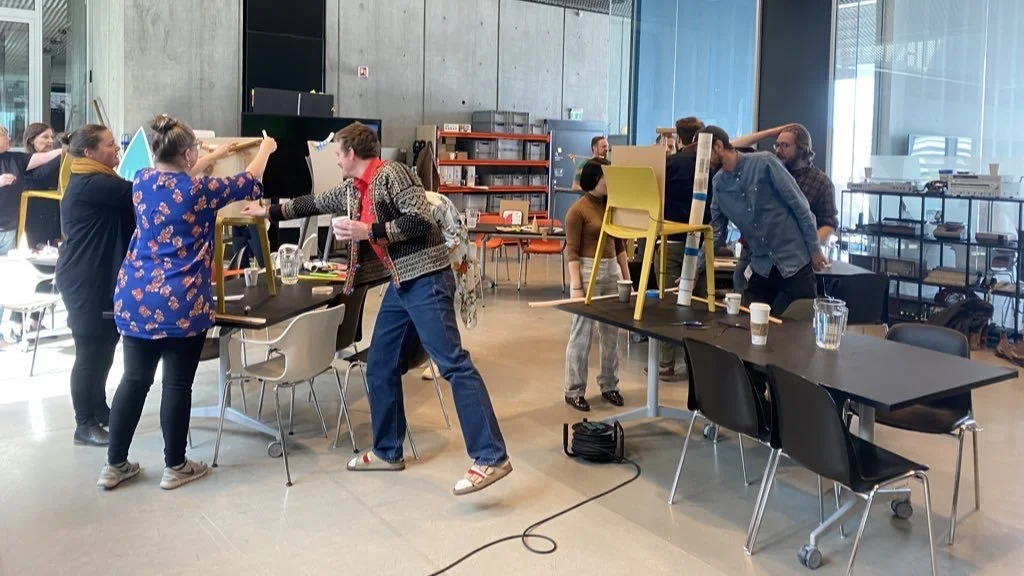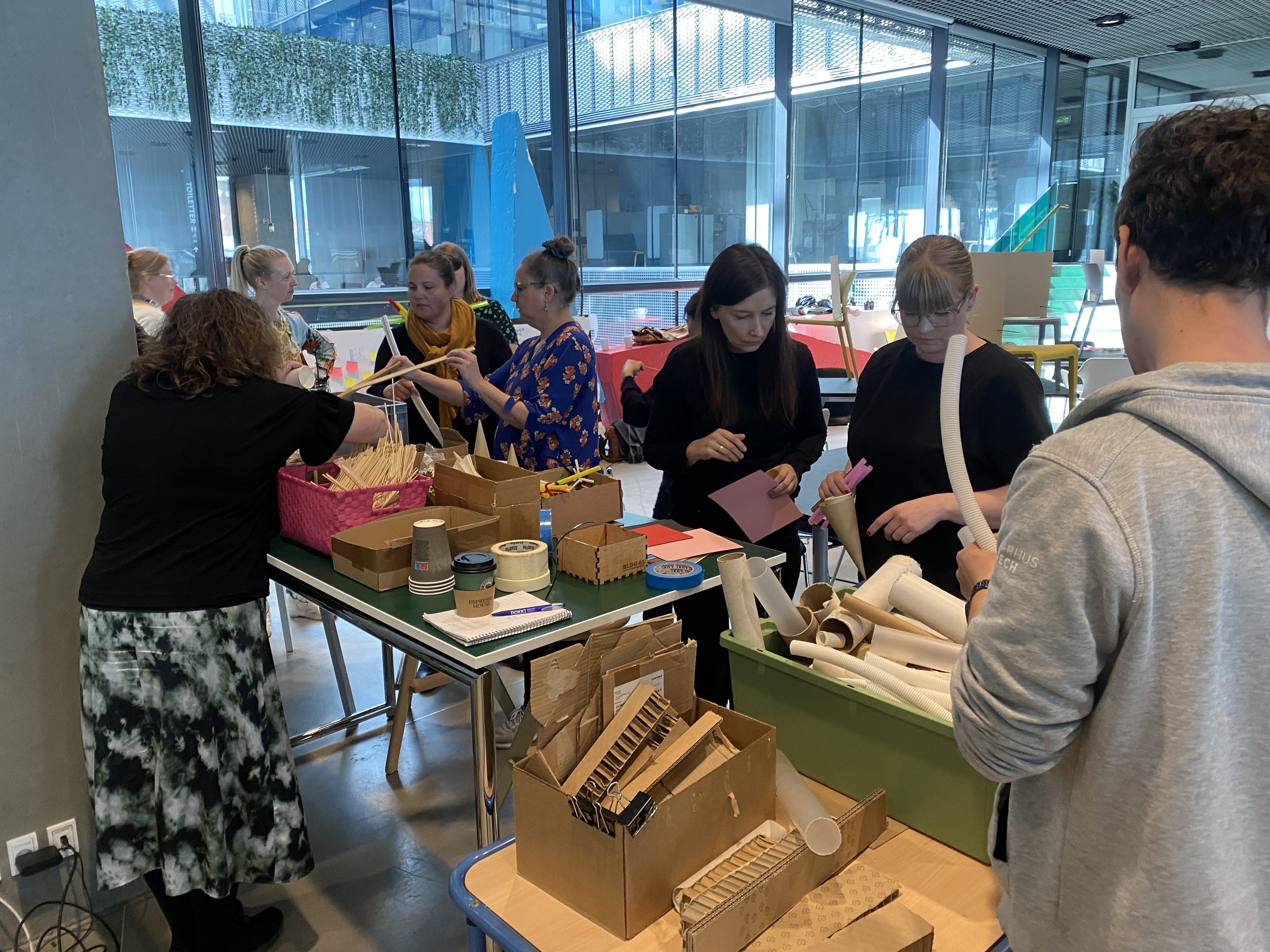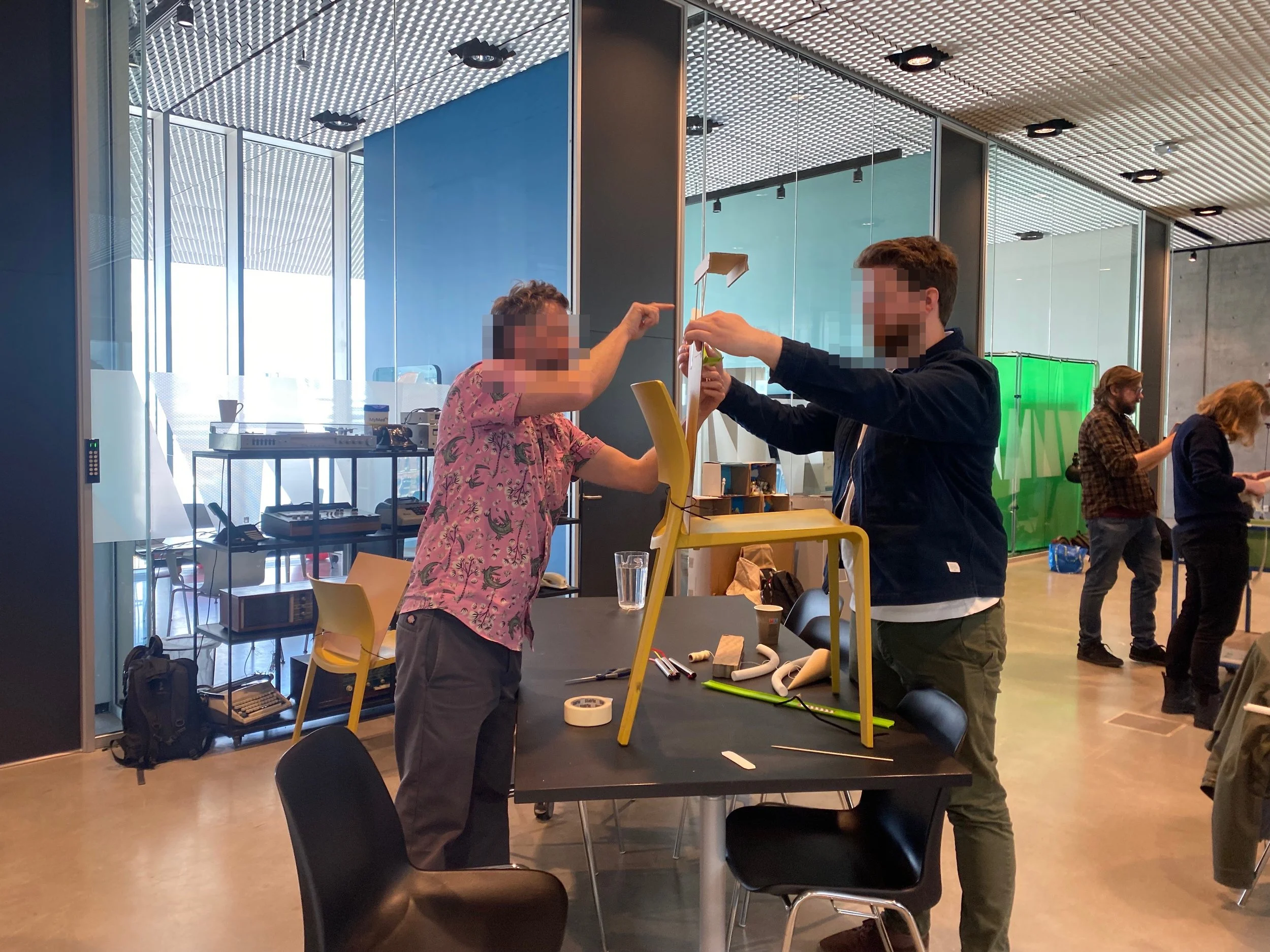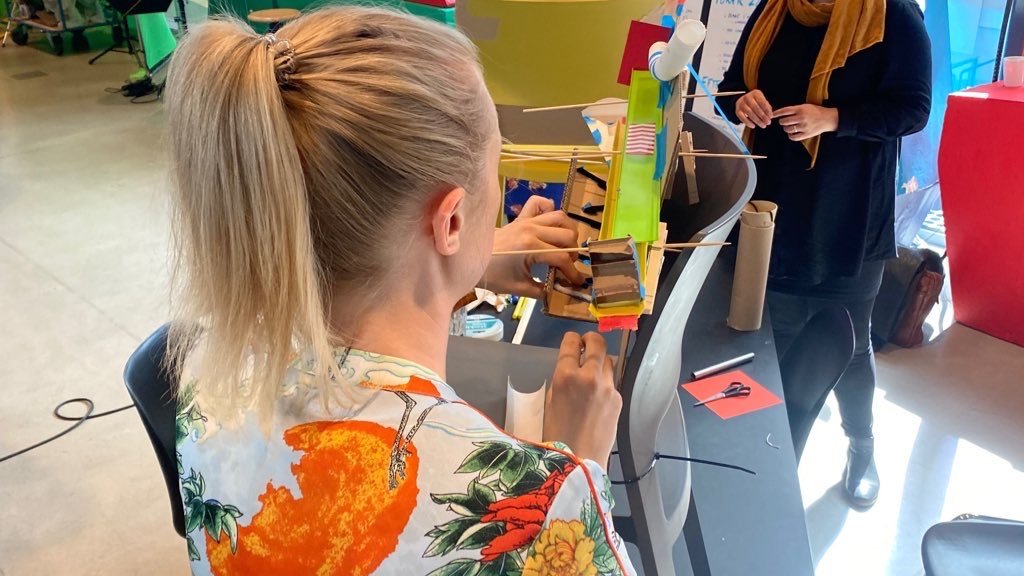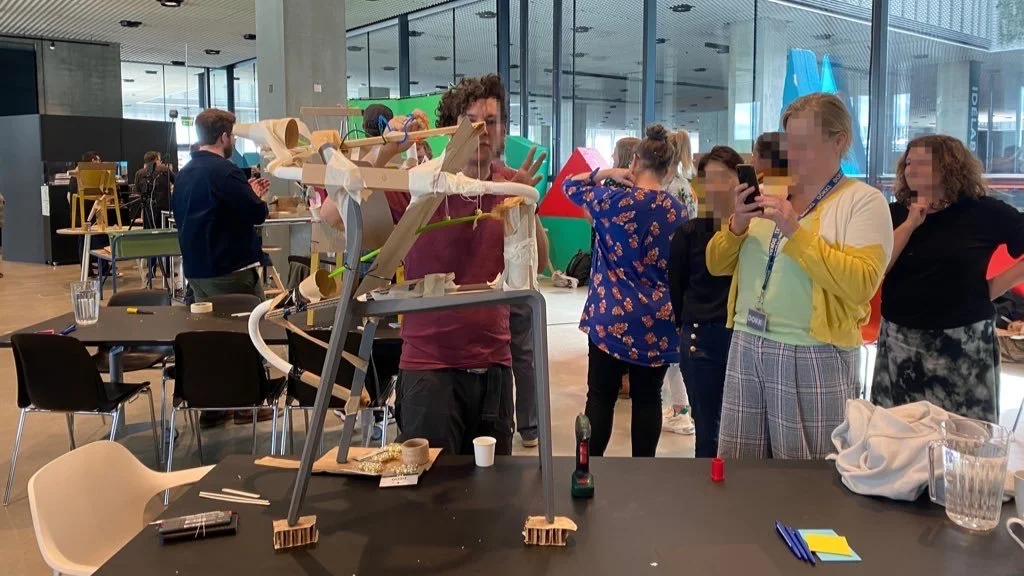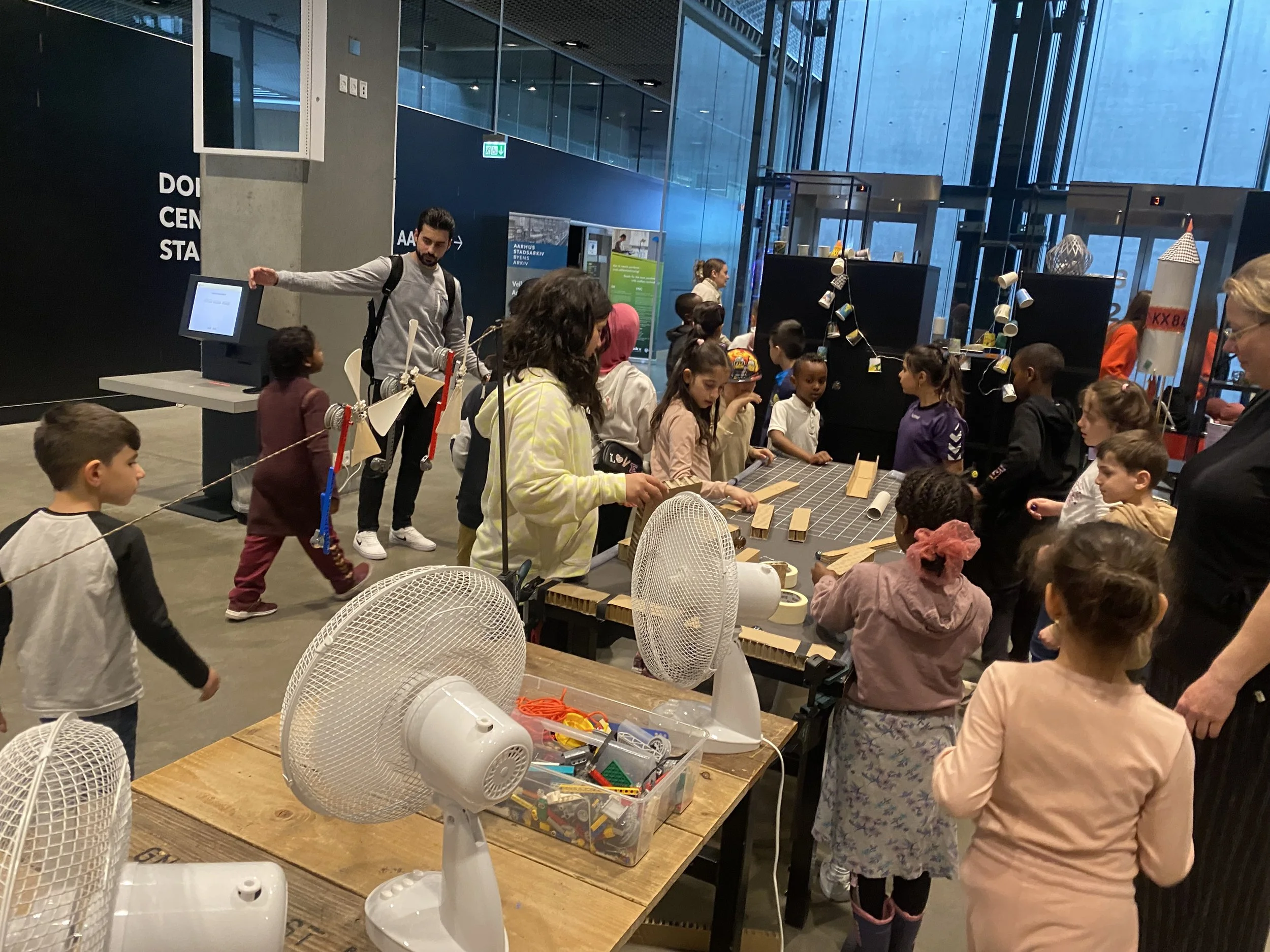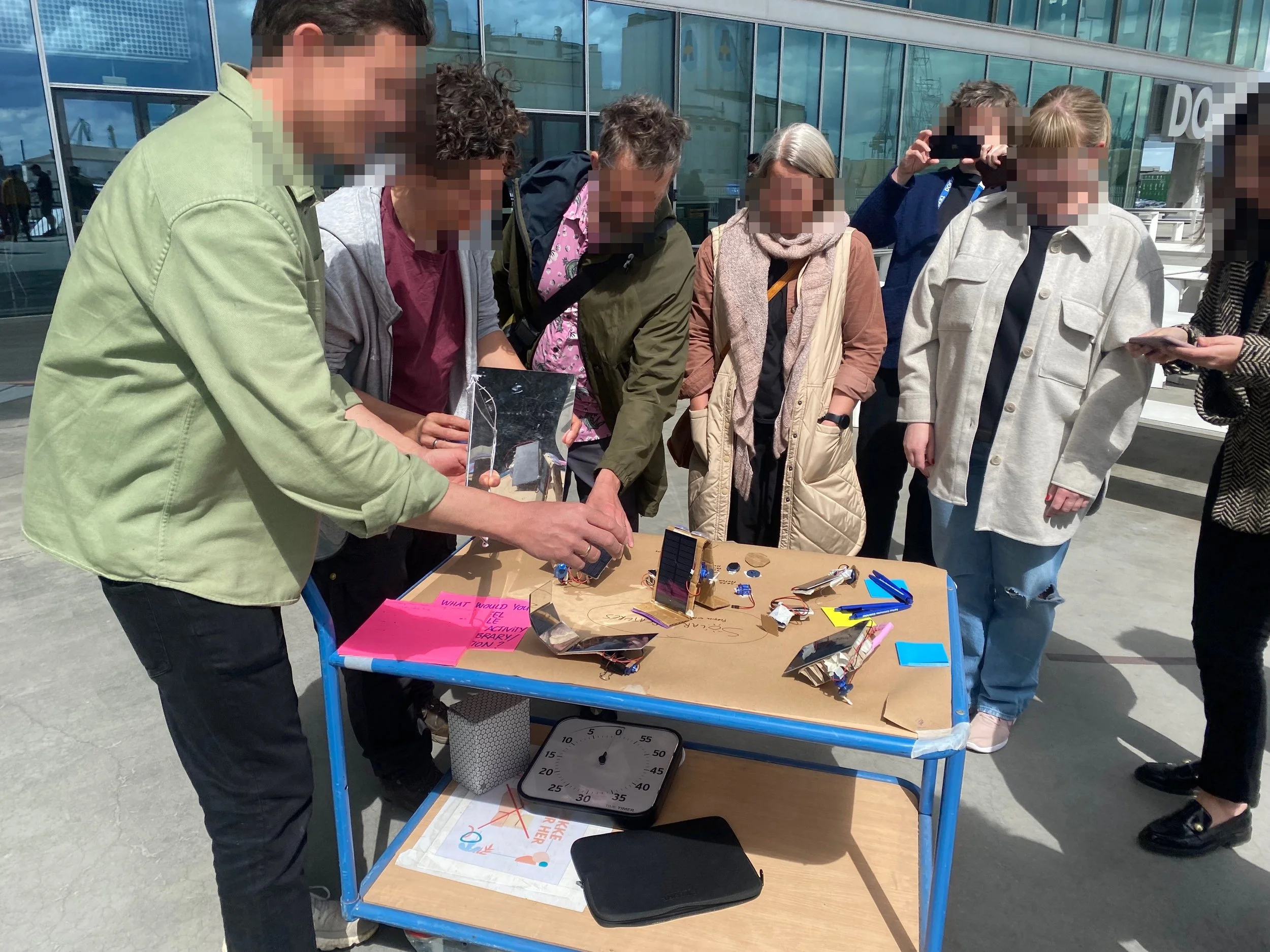Playing with the Sun Prototyping at Dokk1 Library
A couple weeks ago, I had the opportunity to visit the makerspace at Dokk1 Library in Aarhus, Denmark as an tinkerer-in-residence to help prototype new ideas for playful experiences using solar panels, motors and electronics. For this project I got to collaborate with long-time collaborator Amos Blanton of Aarhus University and a team of local educators and designers that he has been working with at the library.
I arrived at the library makerspace and we immediately started looking at materials, tools and previous solar projects. The two main pathways that the team has been exploring so far include solar drawing bots (a update of scribbling machines using a solar engine circuit to regulate the storage and release of energy) and a solar creatures activity where moving bugs are triggered or controlled by participants reflecting sunlight on the panels using large mirrors.
I’ve been inspired by Amos’s initial reflections about the reasons for putting the focus on solar explorations. In a blog post he writes about how we can and should create compelling toys and tools to think with that model a more sustainable relation to energy. We’d like to have projects that allow people a first hand experience with the idea that energy comes direct from the sun, that it’s not on-demand (when it’s cloudy there’s less) and that you can store power and use less or more as it’s available.
Some of the challenges that we identified for the activities include making the drawings of the art bots more varied and more reflective of the phenomenon. We’re wondering if the bot could actually be an artistic version of a sun-tracker and record periods of sun and cloud over an afternoon. We also wondered if we could use the specific way that the solar engine moves the bot in spurts and bursts to change the drawing (not just move faster and slower while making the same pattern). As well, for the kinetic creatures we were interested to try to create examples with a more organic look and feel and life-like modes of locomotion. Since we wanted this creatures project to be more directly related to the sun-power without the solar circuit, we discussed other ways of changing function when the sun disappears behind a cloud. Some ideas we’ve had include a low power mode with LEDs and a high power mode with motors, adding a crank for automata like movement or having the capability to charge from a human powered energy source.
One slight complication that came up during the prototyping process was that after a first beautiful Monday, the cloud cover descended and we lost out chance to develop the experiments outdoors. Eventually we hope that when this happens we’ll be able to shift to another project theme based on wind or water power, but for this specific week it meant that we had to bust out a high powered light for testing in the library makerspace.
One of the first things that we worked on was refining some of the little parts of the activities that can take away from the engagement of learners in the experience. For example, we tried to simplify the electrical connections and create base models as starting points.
For the drawing machines, it was interesting to use multiple motors powered by solar panels at different angles. This allowed for the machine to move fast and slow at different rates depending on the position of the solar panel. Although these are more complicated than a traditional scribbling machine, there’s a lot of potential to explore the wide walls of the investigations.
On the next day of the residency we investigated more creative ways of making things move. I built one machine with an inch-worm body, one with a bendy straw tentacle and one with a foot on a wire to start to investigate the range of possibilities for creating movement. We hope that if we put out three very different examples, learners would take those ideas and create new and unexpected designs.
On Thursday, we led a workshop for about thirty other library professionals. Our plan was to share a combination of a classic tinkering activity (marble machines) alongside some of our recent prototypes. It was a chance to learn about what the group was interested in and how we can best support future tinkering experiments.
The marble machine variation we tried used chairs as a base. Because the back of the chair was at a big angle we zip-tied a flat piece of cardboard to the back, giving people the chance to build more complex pathways for the marble to travel as slowly as possible. We were really impressed with the variety of ideas, the artistic elements on the boards and the innovative thinking outside the box (and off the chair and down the stairs). It’s always so fun to see the wide walls of this activity in action.
And in the afternoon we finally got the chance to try out the solar experiments with the group on the patio outside the cafe. When we had glimpses of sun through the clouds, the machines came to life and began to crawl, slither, and scoot around the table. It’s still really early in the prototyping process but having the chance to involve colleagues in the process at this stage is a really powerful way to share ideas and clarify goals.
I’m looking forward to future collaborations with Dokk1 (stay tuned for a podcast episode coming soon) and continuing to learn about how tinkering fits in to the library setting!

